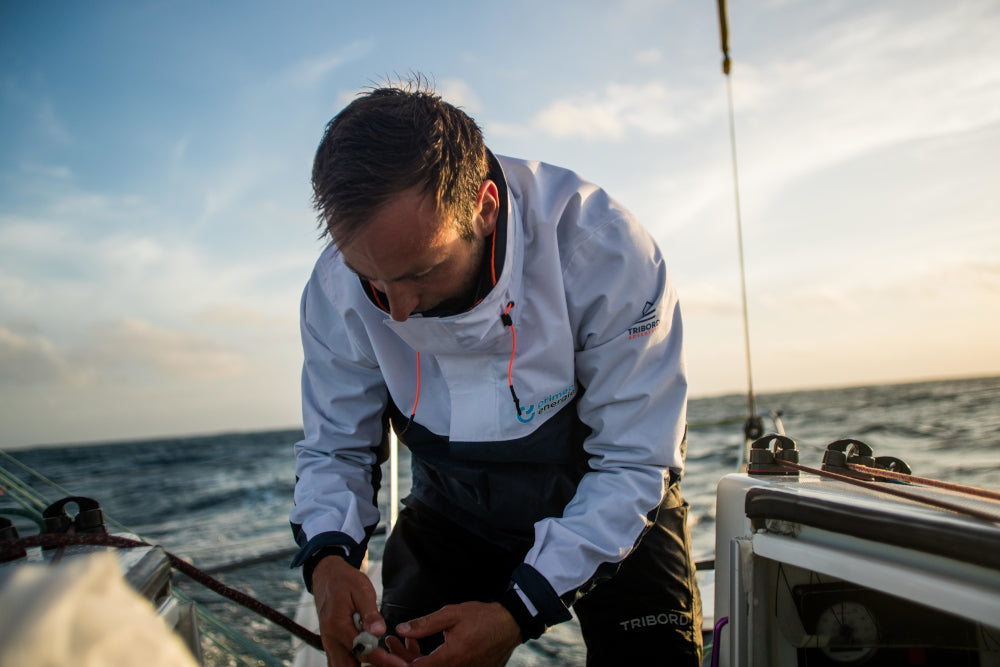The basics for learning how to maneuver a sailing boat
The basics of sailing begin with heading up and hauling in, as well as falling off and easing off. These sailing terms, explained from the very first sailing lessons, are essential. Why? Because they allow the helmsman (the person at the boat’s helm) to give instructions to their crew. These maneuvers aim to either turn into the wind or turn away from it
Heading up and hauling in to turn into the wind
This maneuver allows you to turn into the wind. In order for it to be properly carried out, the coordination between the helmsman and their crew must be perfect.
Heading up means that the helmsman directs the nose of the boat closer to the wind. To do this, they must
push the rudder tiller or turn the wheel in the direction of their choice; tell their crew to haul in the sails.
Hauling in means that the crew must tighten the sail. This sailing maneuver involves adjusting the sheet (the rope used to alter the angle of the sail relative to the sailing boat) and therefore allows the boat to turn into the wind.
If you release the wheel and the boat heads up naturally, this is known as weather helm.
Falling off and easing off to turn away from the wind
Conversely, this maneuver allows you to turn away from the wind.
When a helmsman falls off, this means that they turn the front of the boat away from the wind. Here, the maneuver is almost the same as when the helmsman heads up as they must:
- pull (rather than push) the rudder tiller or turn the wheel in the direction of their choice;
- tell their crew to ease off the sail.
Easing off also means tightening the sails in order to fall off the boat and have the full wind behind you. This means the boat will accelerate.
If you release the wheel and the boat falls off naturally, this is known as lee helm.
Hoist or bring down the sail?
Sailing terminology is as vast as the ocean. That’s why it’s important to distinguish between these two notions:
- Hoisting the sails sends the sail to the top thanks to the rigging: the halyard;
- Bringing down the sail means that we take down the sail(s) using its weight.
How to dock at a port and moor a boat?
Boat fenders, moorings, the crew, the helmsman have to think of everything when docking at a port. The maneuver can be delicate in certain ports that are difficult to access, which is why the operation requires the whole team to be rigorous and meticulous. While the helmsman directs, the crew has to deal with protective elements (boat fenders) and the rigging (moorings).
Here are some precautions to take when docking at a port:
1. put the boat fenders in an upright position along the whole of the hull, at jetty height;
2. wrap the moorings around the cleats so that they are ready;
3. analyze the direction and strength of the wind, and do the same for the current;
4. check that the spot is available or at least that there is a space for visitors on the jetty.











